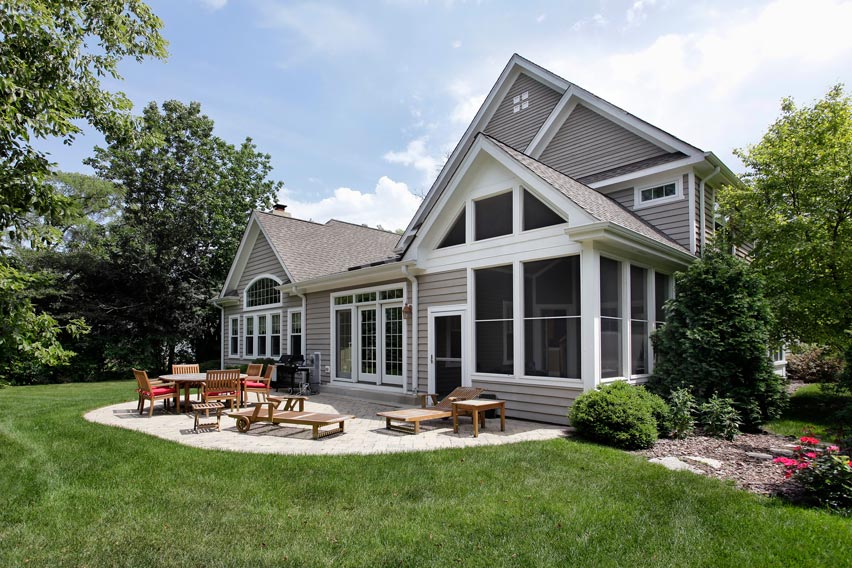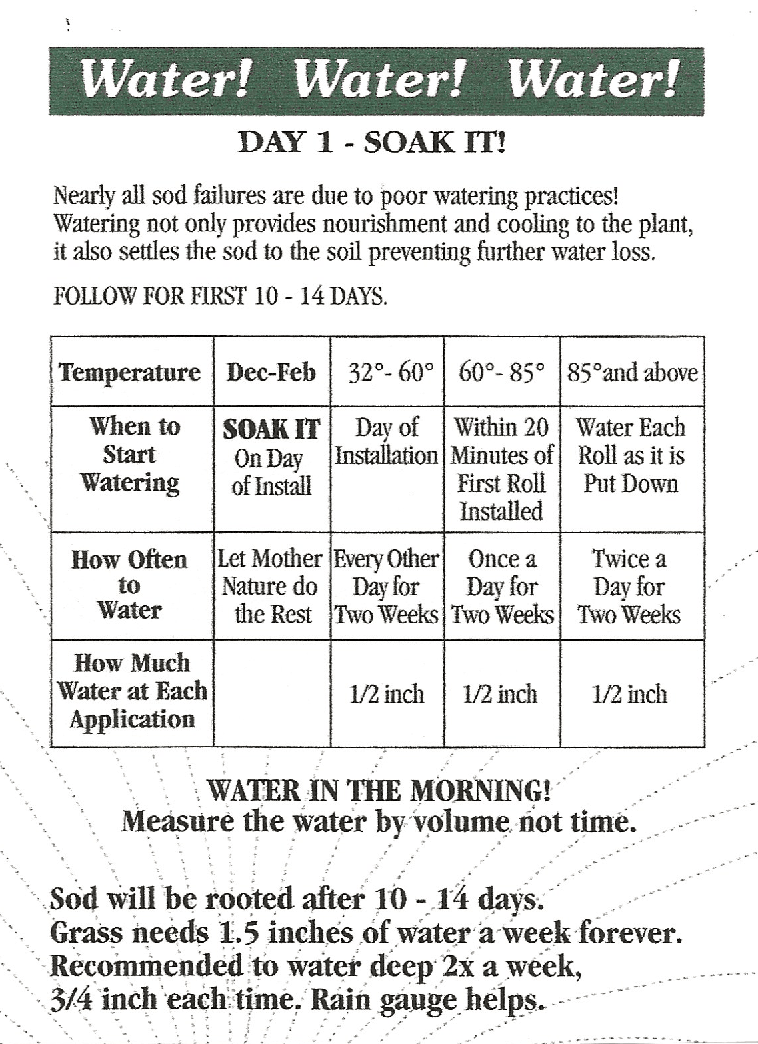General Maintenance

When installing Fescue or Zoysia sod you are transplanting a plant. The sod is fresh and healthy when it leaves the farm. It is important to install as soon as possible. Sod is perishable, and depending on temperatures it has very little “shelf” life. Good Soil to Soil contact is needed for success. Any way you can enhance the soil the better success you will have. You may want to do a soil test prior to installing sod. This is the link to get a soil test https://www.soiltest.vt.edu/fees-and-forms.html Preparing your area be sure to clear all debris. Good loose soil – so the roots can dig down. Rough the grade to eliminate drainage, loosen the soil to a depth of 4 inches; remove sticks, stones, clods, weeds, and old grass. You must apply Lime and Starter Fertilizer (only Fertilizer with Phosphorus -good for new plants) prior to putting the sod down. Check with your area garden center on types and read the label for amounts needed. Soil preparation needs to be complete before you install your sod. As mentioned, Sod is a perishable product, which needs to be installed as soon as possible after harvesting. Heat builds up in the rolls and gasses are released and the sod starts to break down.
Turf Type Tall Fescue is a cool-season grass, ideally the best time to install Fescue is September, although available all year. Planting in September gives the sod an 8–9-month root base. Hot summer months are NOT the time to install Fescue. Freshly installed sod needs to be babied the first two weeks, depending on the current temperatures it has to be watered every other day or every day. It is important to water a minimum of ½ inch of water each time. Irrigation is a great tool, but running it 2-3 times, a week for 15 minutes may or may not be enough water. Shallow watering will make the roots curl up. It is recommended that you water less often but deep.
Measure the water by volume not by time.

Measure VOLUME of water put on your lawn with a rain gauge, tuna can or measuring cup, any container to catch and measure the water. Pay attention to irrigation zones, make sure all areas are getting water.
Zoysia is a warm-season grass. Each year the start of the season varies based on the weather. Once we start to harvest, Zoysia is available until October 1st. Brookmeade offers Zoysia by the square yard or bag of Plugs. The process is the same for planting Zoysia as it is with Fescue. Yes, Zoysia is drought tolerant -but it still likes water and needs it when first planted. The goal is for it to root. After 2 weeks it should be attached to the ground, then water 2x a week to yield 1 inch of water a week throughout the season.
Zoysia Plugs – Planting plugs requires patience. Depending on the competition, Plugs can take 3-4 years to grow together. Brookmeade recommends planting the plugs 12 inches on center, staggering the holes. Starter Fertilizer and Lime mixed into the soil but not directly into the hole! Too much concentration in the small hole could burn up the plug. Because of their size, Plugs have a tendency to dry out, they need to be kept moist the entire first season. Mother nature may help you reach your weekly watering goals of at least 1 inch a week.
Zoysia sod will need the watering during the first 2 weeks and then you can just about leave it alone. If it appears to be dry – you can water it. After established, you can put high Nitrogen Fertilizer on the Zoysia 1x a month in June, July, and August. Feeding the grass will make it grow more – requiring more mowing. The great advantage to Zoysia is the fact that little maintenance is required.
Most sod failures are due to improper watering, too much, too little, too frequent. We cannot stress enough that watering in the morning and a measured amount is key. Watering is measured in volume, not time. Irrigation is a great investment but it can miss areas and pressure is different for all.
HOT temperatures, afternoon thunderstorms, warm moist nights increase the opportunity for Brown Patch for Fescue. Applying a fungicide for Brown Patch in June, July and August can help in preventing it. September also cures it.
